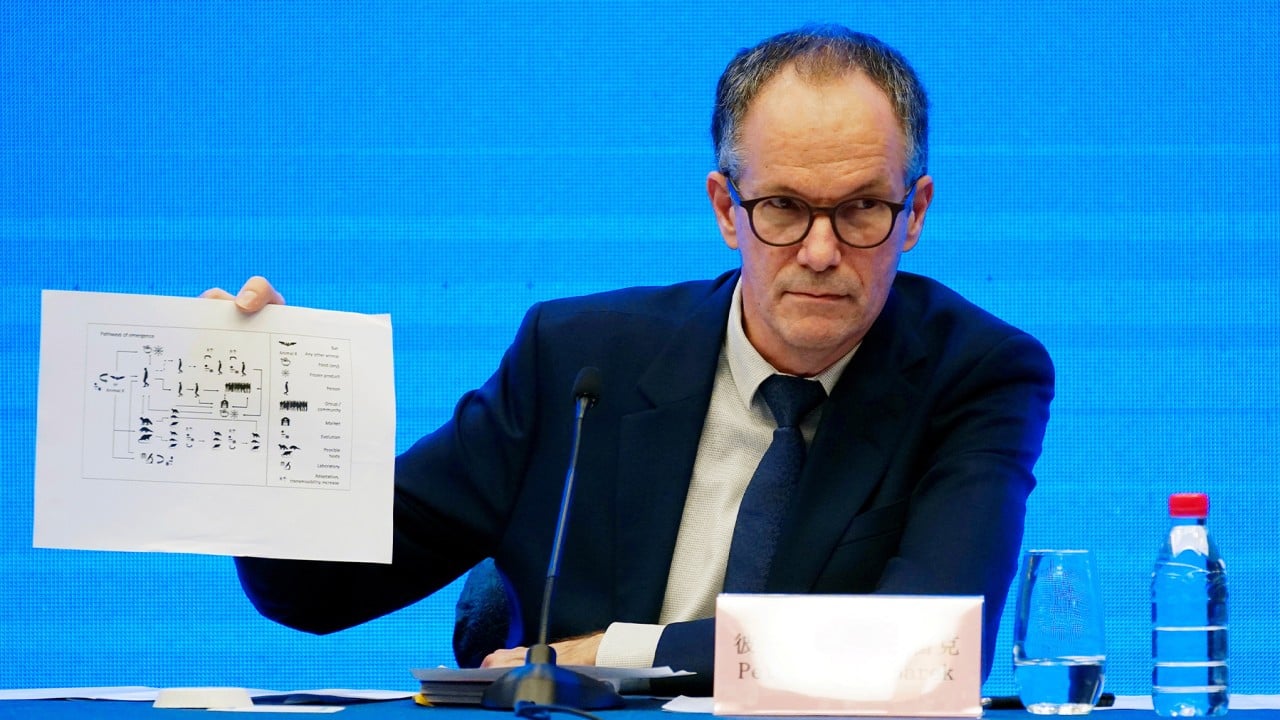
Coronavirus: all origin theories still on the table, WHO chief says
- Lead investigator says it is extremely unlikely the virus leaked from a lab in Wuhan because facility did not have the pathogen
- Team expected to publish summary of trip report next week
“Some of that work may lie outside the remit and scope of this mission. We have always said that this mission would not find all the answers, but it has added important information that takes us closer to understanding the origins of the Covid-19 virus.”

01:56
WHO ends Covid-19 mission in Wuhan, says lab leak ‘extremely unlikely’
Citing concerns over China’s lack of transparency, a State Department spokesman said on Tuesday that the United States would confer with its allies and the intelligence community “rather than rush to conclusions”.
The 14 members of the WHO team arrived in the central Chinese city of Wuhan last month, conducting site visits and reviewing research by Chinese scientists.
They said evidence suggested the virus originated in bats, and identified four ways it might have spread to humans.
Further research was also warranted to see if frozen cold-chain products played a role in transmission or if the virus spread to humans directly from a bat according to team leader and WHO food safety scientist Peter Ben Embarek.
The laboratory incident, however, did not “suggest” a need for future studies, he said on Tuesday in Wuhan at the end of the mission.
The Trump administration claimed last year that it had proof that the virus emerged from a laboratory in Wuhan, home to the Wuhan Institute of Virology, a facility that has investigated bat coronaviruses.
The administration did not release any evidence to support the claim but former US secretary of state Mike Pompeo raised the theory again in his last days in office with a State Department memo suggesting that some members of the laboratory were ill with Covid-19-like symptoms in the autumn of 2019.
Chinese officials responded by saying US laboratories should also be investigated. Beijing has repeatedly suggested that the virus may not have emerged in China, but was merely detected there first.

01:20
WHO team sees data ‘no one has seen before’ during Covid-19 origin investigation in Wuhan, China
The WHO team visited the institute on their trip and spoke to laboratory staff and management about their research, Ben Embarek said on Tuesday.
Asked in Geneva on Friday why the team did not believe a lab could have been the source, Ben Embarek said the laboratory did not have the virus, and that if its researchers had discovered such a virus it would have been made public.
“Usually laboratory researchers who work and discover new viruses would immediately publish their findings. That’s a common practice around the world, particularly with new, interesting viruses,” he said.
Minutes of the laboratory meetings will be published in the team’s reports. A summary report is expected to be published next week, with the final document released in the coming weeks. Both will be made public.
Coronavirus: in Wuhan, Lunar New Year brings remembrance of loved ones lost
Emerging infectious disease expert Linfa Wang at the Duke-NUS Medical School in Singapore, said the mission’s findings were “within his expectations”.
“In the current environment, it’s very hard to do a totally transparent investigation,” he said, referring to political tensions around the origins of the virus.
Wang was part of the 2003 WHO mission to China to investigate severe acute respiratory syndrome, or Sars. He said that at that time, he and several other international investigators on the team were allowed to look through raw data at a military institute in Beijing.
This time around the politics and disease control restrictions could limit the productivity of the mission, he said.
Wang added that bats and potential intermediary species should continue to be tested in Southeast Asia, where related viruses had been identified, and as well as in China.
“You should do much more investigation in China, but the political environment makes this topic so sensitive,” he said.
Virologist Marion Koopmans, who was on the WHO mission to Wuhan, said the team’s work gave an “understanding of where to look” further.
Koopmans, from the Erasmus University Medical Centre in the Netherlands, said the tracing of animals sold at a Wuhan market linked to a number of early cases could give insight on where to do future studies. Researchers could also test samples in blood banks to search for “small pockets of cases” that predate the earliest known patients, with talks under way in China to get access to those samples.
WHO Wuhan coronavirus mission over but much more work still to do
Members of the WHO team have also hit back at US scepticism of their findings.
In a series of tweets responding to a South China Morning Post report on the US administration’s comments, EcoHealth Alliance president Peter Daszak suggested President Joe Biden was only sceptical about the WHO’s trip to Wuhan because he “has to look tough on China”.
“Please don’t rely too much on US intel: increasingly disengaged under Trump & frankly wrong on many aspects,” he tweeted.

